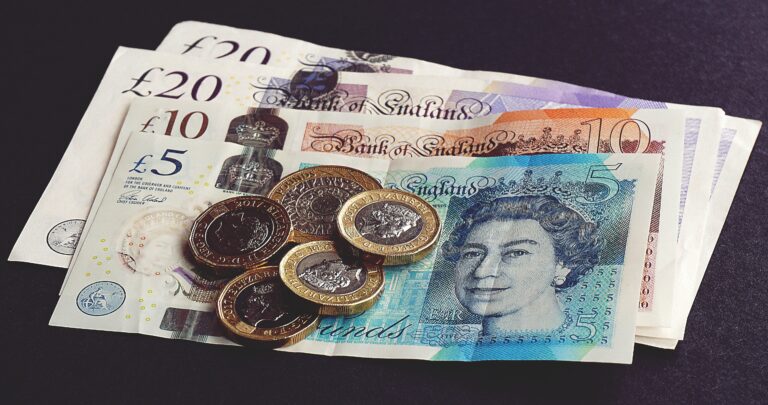
A Pounding for Sterling
Since a Consumer Price Inflation report on 18th April, the Pound Sterling spot index has lost over 5%. The GBP index provides a holistic picture of the Pound’s performance conditioned upon the economy’s relative exposure to respective currency pairs. By purely reflecting the strength of the Pound sterling without the influence of idiosyncratic contra currencies, it’s clear that the Pound has endured a shocking couple of weeks.
As Brexit news has remained muted, the sell-off in the Pound has been almost exclusively economic and technical driven. In fact, on the political scene, only the fleeting tumult caused by the surprise resignation of Home Secretary and “Remainer”, Amber Rudd, caused a sell-off in the Pound. Whilst the market reaction to this political uncertainty was far from negligible, the news seemed mild, having followed months of Brexit blows, impeachment threats and foreign secretary slip-ups.
The economic calendar has thrown up five distinct surprises: Consumer Price Index (CPI), Mark Carney, Retail Performance, Purchasing Managers’ Index (PMI), Gross Domestic Product (GDP). On 18th April, Consumer Price Inflation came in 0.2% lower than expected. Whilst still raging far above target at 2.5%, the outlook for tighter monetary policy remains credible, however, severely dented. The relationships between inflation rates, interest rates and exchange rates are highly significant, with the causality running in that order.
As the rate of price inflation and the general price level decreases, so too does the need for tighter monetary policy to constrain economic activity through the manipulation of the cost of borrowing and the reward for saving. Consequently, as the inflation data undermines the perception of strength behind the domestic economy, the incentive for investors and traders to endow the domestic currency with strength and value disappears. Similarly, the expectations for a higher rate of return from investments in the domestic economy and currency also erode. In sum, the dominant momentum is low price level, weaker currency.
Following the statistics release from the Office of National Statistics, the Pound Sterling lost in excess of 1%, a move exacerbated by weak retail data published the following morning. What moved Sterling markets considerably more, however, were the words of Bank of England Governor, Dr. Mark Carney, when he cautioned the public and investors against the inevitability of an interest rate hike on 10th May 2018.
Earning himself the title of the unreliable boyfriend for at least the third time, the Governor forced a concerning sell off in the Pound. Admittedly, his comments were mildly compensated for by the words of his Monetary Policy Committee colleague, Michael Saunders. Directly unsettling the second causal step, interest rates, the whole event so far saw the Pound trade below 1.41 against the Dollar for the first time in weeks. Against the Euro, the Pound fell through 1.14, setting a new month-to-date low.
The woes of the Pound continued to mount the following week when, on last Friday 27th April 2018, economic growth came in 0.2% below expectation. This data release substantiated the impressions generated a week earlier and supported a conclusion that the inflation statistic was not a rogue observation and, instead, might purport to show a natural cooling down of the economy. Leaping directly to the third causal step and the underlying economy, GBPEUR closed the day trading 1.2% below is open; leaving Sterling-Dollar only a modicum above 1.3750.
With the amalgamation of weak soft data and UK Purchasing Manager’s Indices, the Pound reached its low of 2018 yesterday, falling through 1.35 against an appreciating Dollar. Given that this week’s bearish Pound was largely generated by a shifting of expectations surrounding the Bank of England interest rate decision scheduled for 10th May, there does remain an opportunity for the central bank to restore expectations and even ultimately deliver another 25 basis point hike. Moreover, there is likely to be some short run consolidation for a Pound that is trading well below its short and medium run moving averages.
Discussion and Analysis by Charles Porter

Click Here to Subscribe to the SGM-FX Newsletter
Related Insights

Daily Brief – British Pound
British Pound With a GBP 4 billion auction of 10 Year Gilts today, markets are watching carefully as higher long term rates put pressure on the UK Chancellor and GBP bounces around between USD 1.21 and 1.22. After 6 consecutive trading sessions with GBP weaker and a low of 1.2097 which has taken its toll, […]

Daily Brief – Europe
Europe With EU annual inflation coming in at 2.4% up from 2.2%, conventional wisdom might suggest that that might dampen the ECB’s enthusiasm for an early cut in EUR interest rates at the end of January. But such is the weakness pervading the EU economies, it is more likely that the hawkish tendencies at the […]

Daily Brief – Most Valuable Currencies in the world as at January 2025
Most Valuable Currencies in the world as at January 2025 Not a surprise that the Kuwaiti Dinar at $3.24 tops the league table nor that the Bahraini Dinar $2.65 and the Omani Riyal at $2.59 are also in the top 5. But maybe UK Chancellor Reeves should pay more attention to the magnificent legacy for […]


 Humphrey Percy
Humphrey Percy